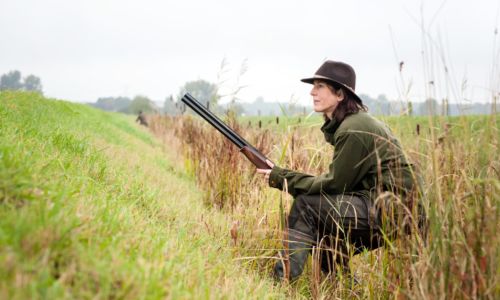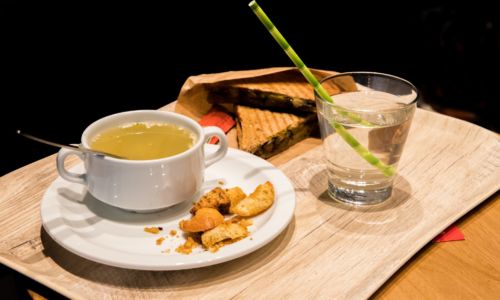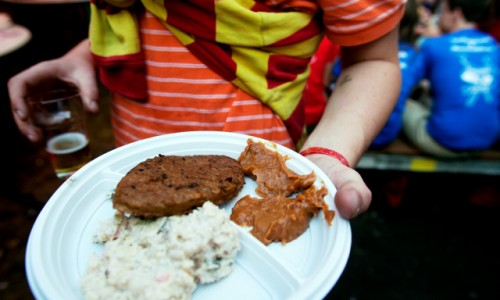A dog is a medicine against growing old
-
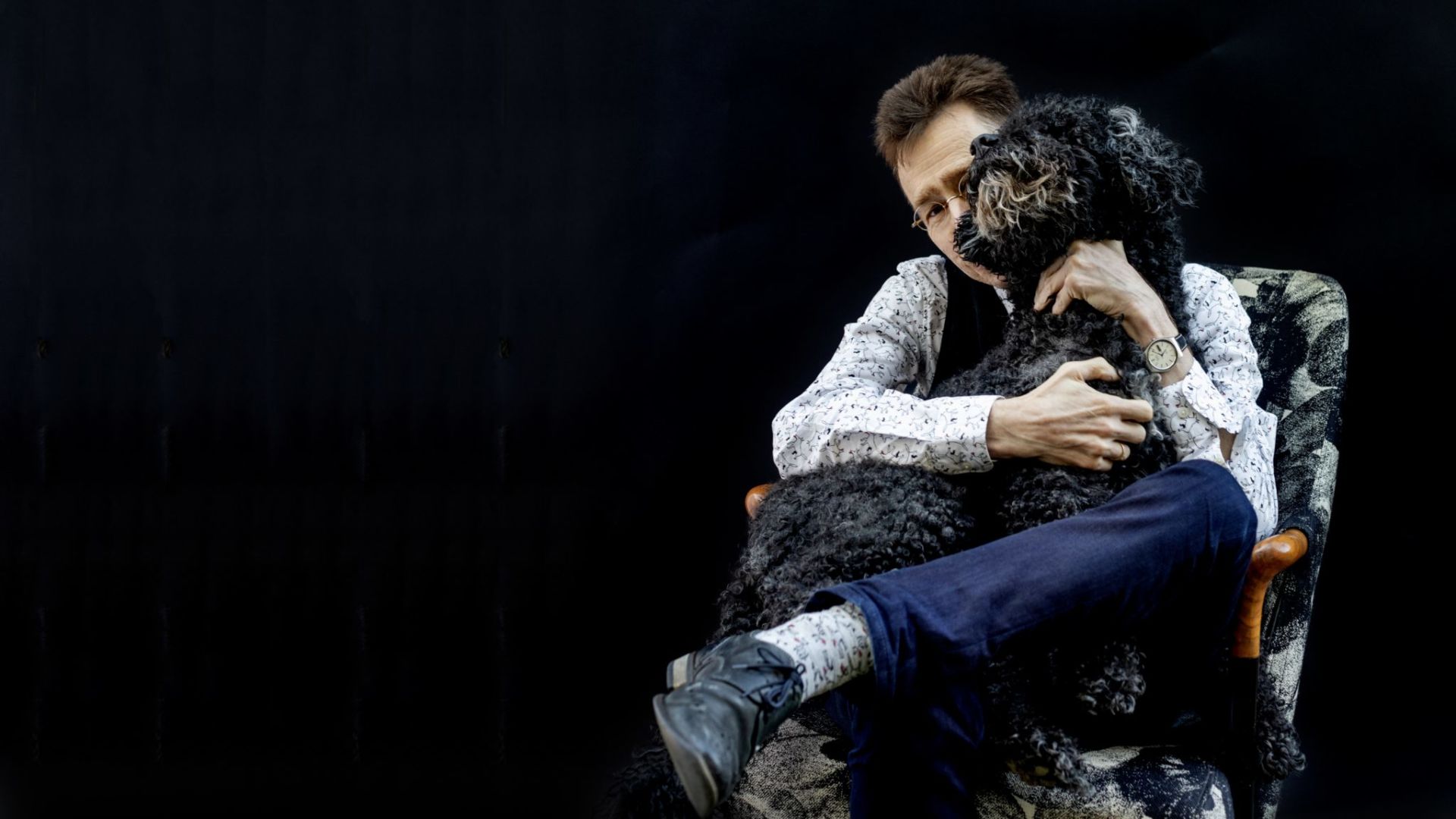 @Duncan de Fey
@Duncan de Fey
Rabbits don’t have a dog’s social intelligence, a dog is not like a goldfish. Four university employees talk about their bond with their pet. 'Ticho and I still go for a run every morning.'
Marcel and Ticho:
‘I had to go and meet the breeders. They wanted to check me out, see whether I was good dog-owner material. Thirteen years ago, my daughter absolutely insisted on getting a Spanish water dog. Once she and my wife had chosen Ticho, I was expected to also make an appearance, as head of the household. Luckily, I passed the test.
I’ve always had pets. As a child, I had a dog, and later a hamster. There have been lots of studies on the effects of owning pets – especially dogs. A dog is a medicine against growing old, it seems. People with dogs walk more, so they automatically spend more time outdoors and moving. And a dog is really good company. Not like a goldfish. Dogs return your love; they don’t discriminate. It doesn’t matter how old or broken you are, they remain loyal.
‘Ticho is gentle and friendly. I try to be too’
Spanish water dogs are active by nature – they are real working dogs. That’s why we used to take Ticho along on cycling trips. We even had one of those carts attached to the bicycle, so he could sit in it when he got tired. We don’t do that anymore, but Ticho and I still go for a run every morning. Fifteen minutes towards the monastery gardens, and then back home. When he was younger, Ticho always ran ahead, exploring. Now he’s thirteen – quite old for a dog. I run slower on purpose, and I wait for him at every corner.
Sportive and social, this is what we have in common. Ticho is gentle and friendly. I try to be too. As a geriatrician, it’s important. You have to show real interest, take your time, and listen to people’s concerns.’
Marcel Olde Rikkert (56) is Professor of Geriatrics. Ticho is a Spanish water dog.
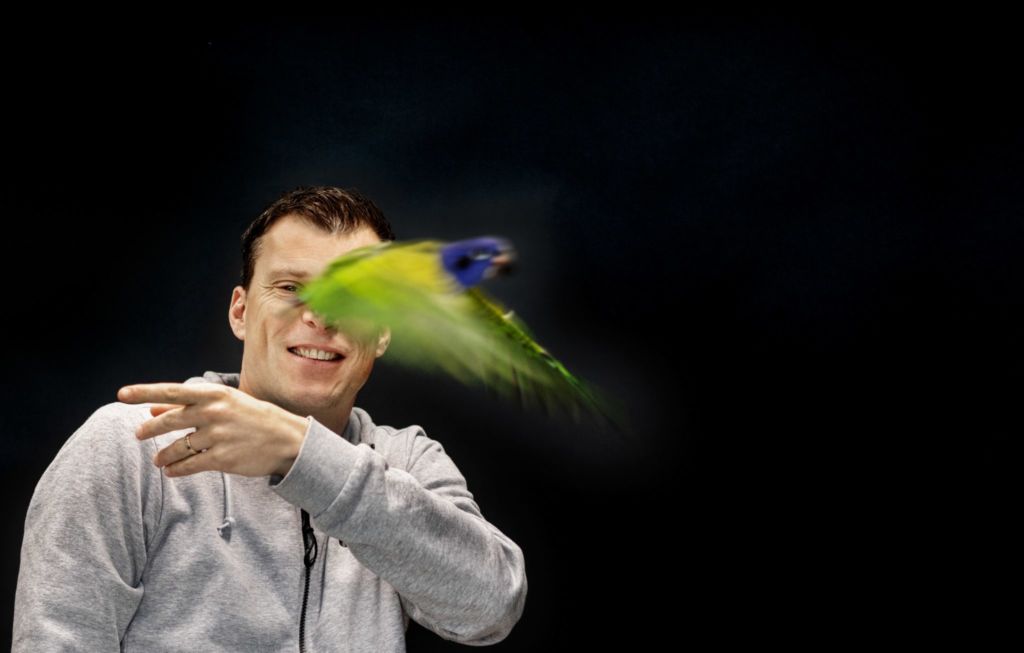
Roy and Rinus:
‘Rinus is already waiting when I enter my office in the Huygens building on a Monday morning. I open his cage, and he flutters out and flies round the room. He knows I first need a cup of coffee to get started; then the fun can start. I take out my sandwich, and give Rinus a bite. We have our breakfast together. He likes cheese best.
He’s quite social. Sometimes he puts his head on my keyboard, which means he wants me to stroke his neck. He also sometimes spits out feed on my desk. It’s his way of sharing.
Rinus has lived in my office for fifteen years now. He’s the second parrot in our department. The first one was called Tummel. When we ate cake, he used to walk over the table and help himself to a piece. A beautiful creature. When Tummel died fifteen years ago, we looked for a replacement and found Rinus via the Internet.
‘Rinus has lived in my office for fifteen years now’
Rinus was in poor shape when we bought him, but he quickly recovered. My colleague, Leon, buys the best quality feed at the vet’s and together we make sure Rinus doesn’t get lonely. During holidays we take turns coming into the office for a few hours.
Rinus gets a shower every week. He loves it! He really prepares for it: spreading his wings and sticking out his bottom. When I spray him, you can see how much he enjoys the water. In the rain forest, parrots also get a rain shower every day.
Since we moved to the new building, Rinus is no longer allowed to live in the coffee room, but only here in my office. He usually just flies around. Sometimes he gets mischievous and suddenly flies out of the room, into the study rooms. One time, I came in after the weekend and found bird poo all over the corridor.”
Roy Peters (43) is an analyst at the Animal Ecology department. Rinus (15) is a blue-headed parrot.
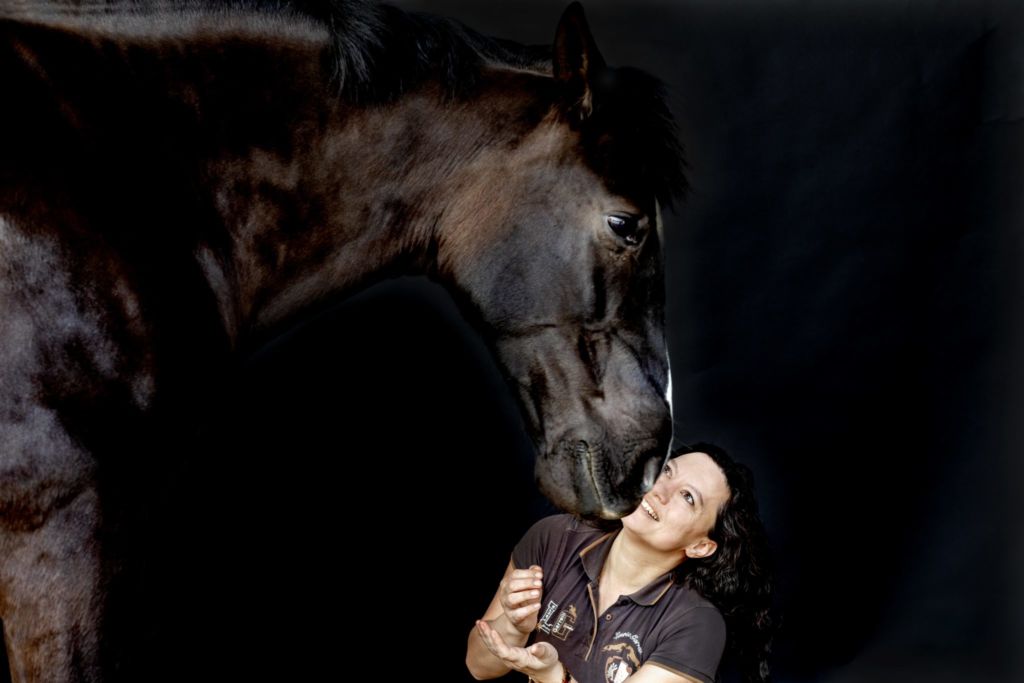
Charissa and Milagrosa:
‘Four years ago I decided to return to my great love: horses. That was when I met Mila. I actually wanted a gelding or a stallion, but we immediately clicked. I didn’t choose her; she chose me.
Mila is incredibly independent. She does what she wants and doesn’t let herself be pushed around. I’m like that too, so I understand her. But I’m also impatient – which can be difficult at times when I want something from her. It took her nine months to fully accept me. At times, she’s incredibly feisty, at other times very meek. In the forest, she can completely flip when she sees a plastic bag or a fallen tree.
‘Spiritually, she’s my teacher’
Last year I had this idea of walking the pilgrim’s route to Santiago de Compostella in Spain with Mila, in stages. My goal was to deepen our bond more. Unfortunately, I developed a serious knee injury. I couldn’t walk or cycle. Luckily I could still ride, which allowed me to spend time in nature. Mila was my legs. This has made our bond much stronger. Do I still plan to walk all the way to Compostella? I don’t know – I don’t feel such a strong need anymore, but adventure still calls.
I’m also a mother of two. My relationship with Mila is, of course, very different. I take care of her, but spiritually, she’s my teacher. She’s wise. Horses don’t project their feelings onto others, the way people do. They’re open, forgiving, and have no ego issues.
My dream is to become a horse trainer in a place where I can have my own herd – doing it my way. Where the horses don’t have to be locked up in a stable, but can roam free. Who knows, maybe I’ll get around to it once my children leave home.’
Charissa Domingus is a lecturer and researcher at the Law Faculty. Milagrosa is a Spanish mare.
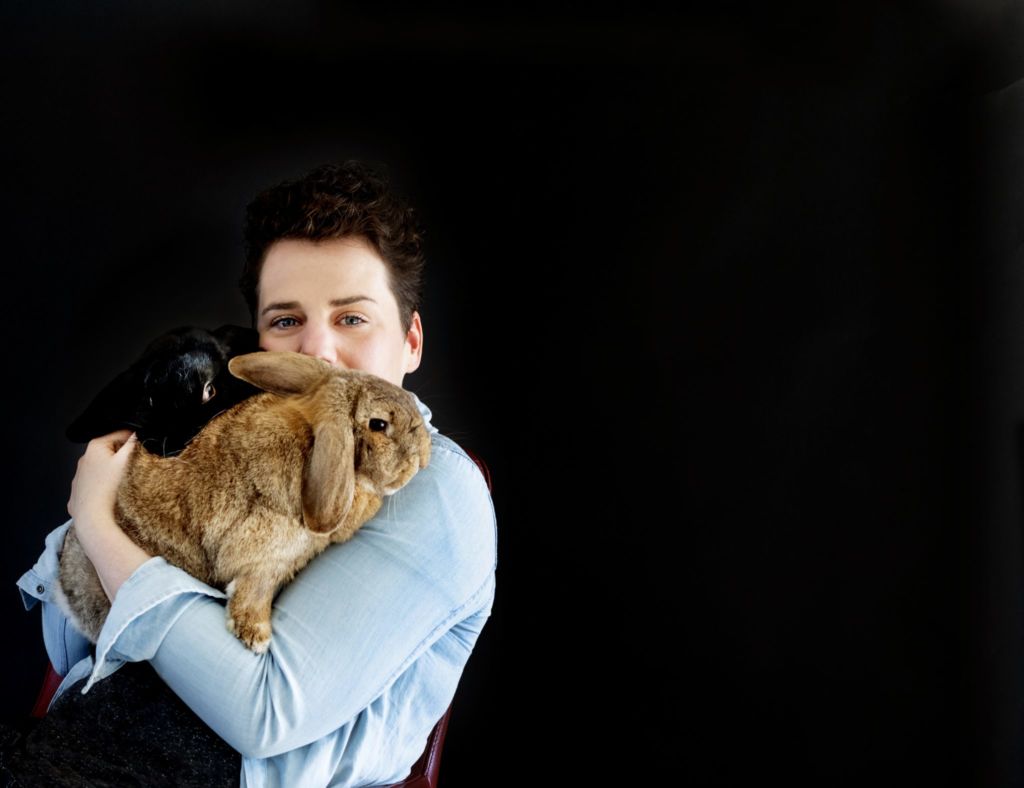
Kobie, Sjors and Sjimmie:
‘When I put on my shoes by the kitchen door in the morning, they go completely wild. Only if I put on my shoes, mind you! They sit outside in their pen watching me, and they know perfectly well I’m on my way to give them a treat. When I get home from work and they see me standing in the room, they jump up and down like mad in their hutch.
Sjors, the brown one, is the male. Sjimmie is a female. When I bought them, they were still two males. Dwarf rabbits, I was told. Once at the vet, I found out it wasn’t true: not their being dwarf rabbits, and not Sjimmie’s gender. So I had to have Sjors castrated. ‘You buy rabbits for €20,’ said my brother, ‘and end up spending hundreds.’ He advised me to buy a new rabbit; it would be cheaper than castration. But of course, I couldn’t do that. I was already attached to them and, more importantly, they were attached to each other.
‘They don’t have a dog’s social intelligence’
They don’t have a dog’s social intelligence. And yet, I do believe they understand me when I complain or when I’m happy. In the winter, they have to stay outside because of their thick winter coats, but in spring and summer, I take them in. They just hop around the room. I think it’s nice and cosy.
In the evening, they join me on the couch, and we watch TV together. Sjors always sits quietly. He doesn’t dare to jump down. Since I had him castrated, he’s become so tame! Sjimmie isn’t afraid of anything. She bullies Sjors. She sometimes even tries to mount him, which he doesn’t like one bit.’
Kobie van Krieken is a postdoc in Communication and Information Studies, Sjors (the male) is a brown rabbit, and Sjimmie is black. They are two years old.
